Mass tourism is a growing concern, impacting destinations worldwide, but with SIXT.VN, you can explore Vietnam responsibly and sustainably. This article delves into the causes of mass tourism and how you can contribute to a more balanced and enjoyable travel experience in Vietnam. Discover alternative destinations and experiences that offer a deeper connection with Vietnamese culture and nature. For convenient and reliable travel services, including airport transfers, hotel bookings, and tours, visit SIXT.VN. Embrace sustainable travel, ecotourism, and mindful tourism.
1. Understanding Overtourism: What Is It?
Overtourism occurs when a destination experiences an overwhelming influx of tourists, exceeding its capacity to handle them sustainably. The Oxford Dictionary recognized this growing problem by adding “overtourism” in 2018. Is the area suffering from an abundance of tourists that it and its residents cannot handle?
Essentially, overtourism strains resources, damages the environment, and disrupts the lives of local communities. When natural tourist destinations are concerned, tourism must respect flora, fauna, and microclimates. Tourism in cities must respect locals, the local culture, and archaeological sites. These locations should be preserved over time. We can talk about overtourism, or unsustainable tourism, if this doesn’t happen.
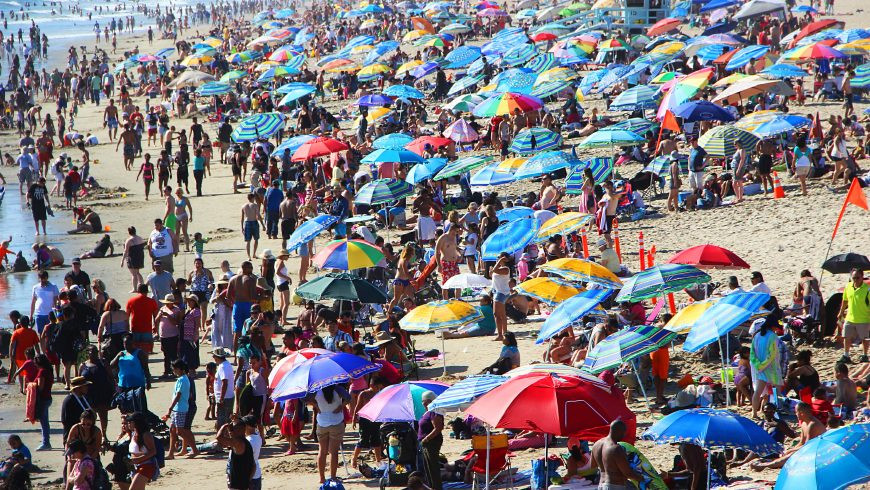 Crowded beach illustrating overtourism
Crowded beach illustrating overtourism
The Alt text: Overcrowded beach on a sunny day exemplifies the challenges of mass tourism, causing environmental and social concerns.
2. Delving Into The Causes Of Mass Tourism
The number of people traveling the world is growing at an exponential rate, with over 1.4 billion people moving annually. The World Tourism Organization projects that by 2030, this number will exceed two billion international tourists. A few popular tourist destinations around the globe are suffering from too many visitors. There are many reasons for overtourism. Cruises bring vast numbers to the seas, and movies make tourist destinations famous.
2.1. The Rise of Cultural Tourism
One current trend is tourism driven by mainstream culture. People choose destinations based on social media, influencers, TV shows, and movies. “Film tourism,” driven by films and television shows, has occasionally caused disasters. A recent trend is tourism influenced by popular culture. People chose the destination based on social media, influencers, television programs and films. Tourism influenced by film and TV series products, also known as film tourism, has in some cases led to real disasters. The small beach at Maya Bay in Thailand, where the film “The Beach” with Leonardo Di Caprio was filmed, is an example of what is occurring in the Pacific Islands. The Thai government was forced to prohibit tourists from entering in order to restore the delicate balance of the stunning bay as tourists flocked to view the film set over the years.
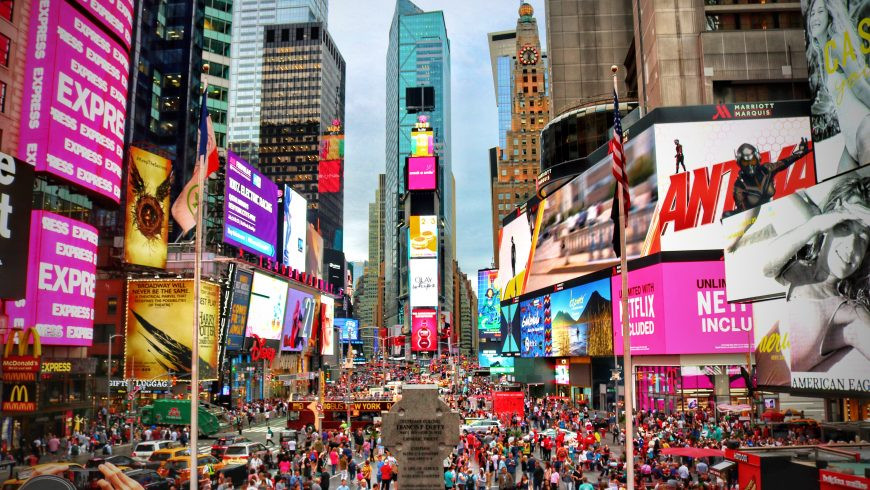 Crowd in Times Square showing the impact of mass tourism
Crowd in Times Square showing the impact of mass tourism
Alt text: Tourists flood Times Square, illustrating the consequences of mass tourism on urban areas and infrastructure.
2.2. Increased Accessibility and Affordability
The rise of low-cost flights and cruises has certainly contributed to overtourism. More than 1.4 billion people move around the world every year, and the numbers are growing at an exponential rate. The World Tourism Organization predicts that by 2030, more than 2 billion international tourists will travel. Many people focus on a few global tourist destinations, which causes an overabundance of tourists. From the famous films that make tourist destinations famous to the ease with which any corner of the globe can be reached, there are numerous causes for excessive tourism. Cruises that bring large quantities around the seas can also be named.
2.3. The Impact on Italy
The World Tourism Organization’s (UNWTO) data speaks for itself. The excessive number of tourists is harming the environment and residents of Italian cities. Venice, for example, receives approximately 20 million visitors each year. This number is a little excessive for such a delicate city, which is further harmed by cruise ships that cause pollution. Venice, for example, is visited by about 20 million people a year. A number a little too high for such a delicate city, devastated also by cruise ships causing pollution.
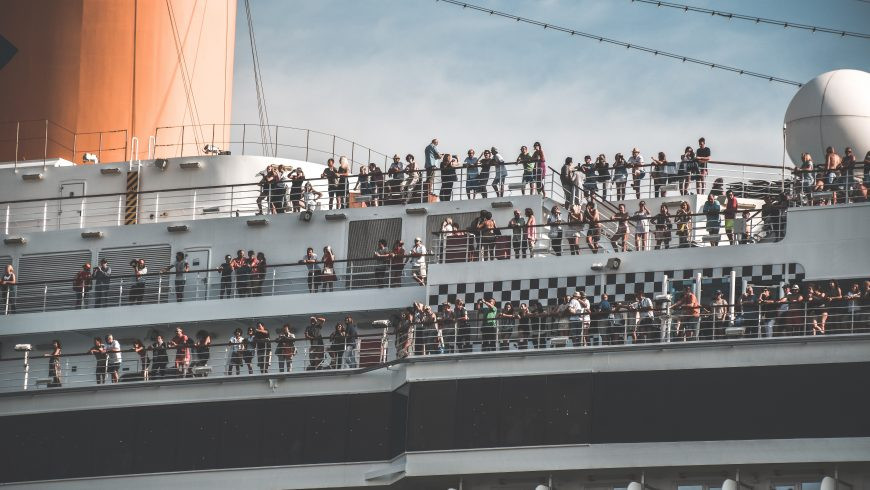 Cruise ship contributing to overtourism
Cruise ship contributing to overtourism
Alt text: A cruise ship docked near a popular tourist destination, symbolizing the contribution of cruise tourism to overtourism.
Florence, Capri, and the Cinque Terre National Park in Liguria are also suffering from the high number of tourists. These Italian municipalities are taking steps to limit the number of visitors as a result of this influx. Even Florence, Capri, and the Cinque Terre National Park in Liguria suffer from the excessive number of tourists arriving every year. This influx is leading the administrations of the various Italian municipalities to take steps to limit the number of revenues.
3. Exploring The Consequences Of Overtourism
Overtourism’s consequences are far-reaching and impact both the environment and local communities. The flora and fauna are usually the first to suffer overtourism in the most popular natural tourist destinations. Environmental issues in some natural locations have resulted in the extinction of entire ecosystems. Among these problems, we can mention deforestation, exploitation of the soil and pollution. But also, no policy of raising awareness and protecting natural environments.
3.1. Destruction of Natural Ecosystems
Environmental issues in some natural destinations have resulted in the destruction of entire ecosystems. Deforestation, soil exploitation, and pollution are among the issues. Furthermore, there is no policy to raise awareness and protect natural environments. Coral reefs around the world have no chance of redemption. Corals are part of a natural system that is becoming extinct as global warming and tourists irreparably destroy them. In some natural destinations, environmental issues led to the destruction of entire ecosystems. Among these problems, we can mention deforestation, exploitation of the soil and pollution. But also, no policy of raising awareness and protecting natural environments. In some cases, this situation has no possibility of redemption, such as, for example, what happens to coral reefs around the world. As global warming and tourists irreparably ruined them, corals are part of a natural system that is becoming extinct.
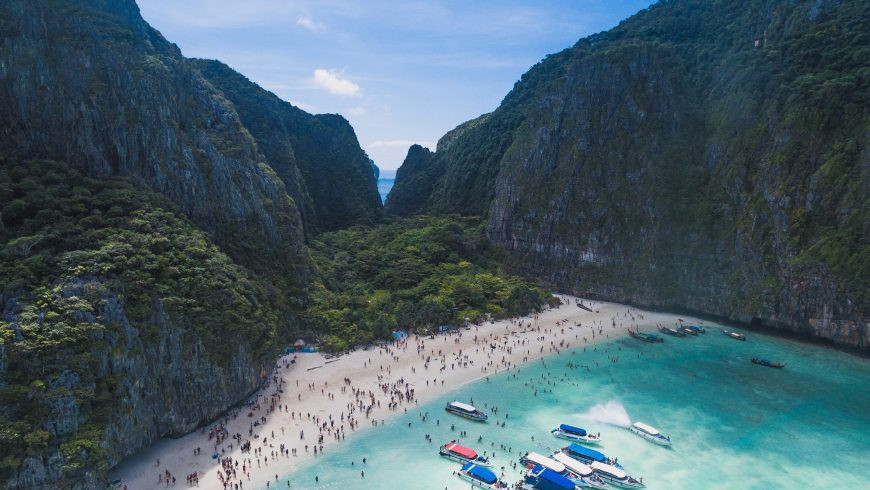 Maya Bay in Thailand, a location impacted by overtourism
Maya Bay in Thailand, a location impacted by overtourism
Alt text: Maya Bay in Thailand, a once pristine beach, now showing signs of environmental degradation due to excessive tourism.
3.2. The Growing Waste Problem
Another consequence of mass tourism is the enormous amount of unsorted waste that people produce. This inevitably leads to a significant environmental problem of disposal and pollution. After years of unregulated tourism, Boracay Island in the Philippines was closed to allow the ecosystem to recover. On the island of Bali, waste management is also a serious issue, and Zero Waste Bali is attempting to address it. Another consequence of mass tourism is the large accumulation of waste that people don’t differentiate. Inevitably, it creates a major environmental problem of disposal and pollution. Boracay Island, in the Philippines, has been closed to restore the ecosystem after years of uncontrolled tourism. The waste problem is also very important on the island of Bali, which is trying to combat it thanks to the thought of Zero waste Bali.
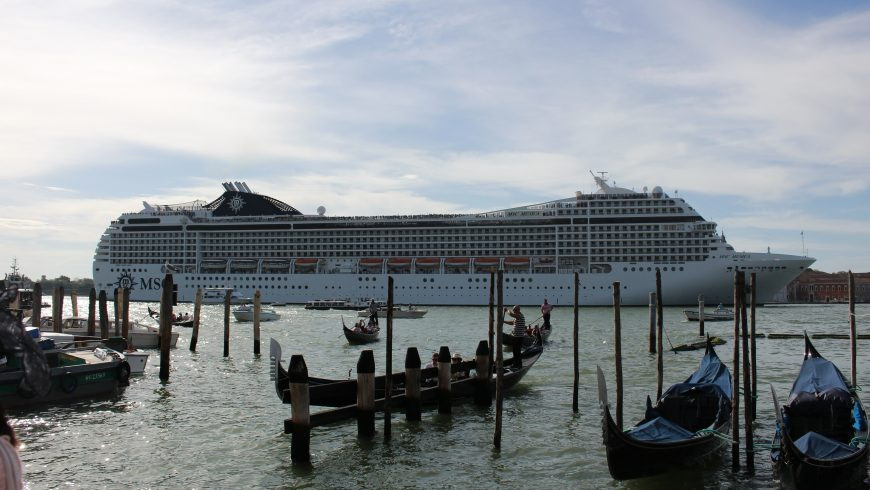 Venice suffering from overtourism
Venice suffering from overtourism
Alt text: Venice, a historic city, struggling with the effects of overtourism, including crowded streets and strain on infrastructure.
3.3. Impact On Residents
Locals are the most affected by excessive tourism. In cities such as Barcelona and Venice, overtourism has sparked strong tensions among residents. Residents complain about rising housing prices and rentals, which have been inflated by online platforms such as Airbnb. They also discussed the disappearance of small businesses, which have been replaced by tourist shops, and the inviolability of their cities. The end result is that residents flee their cities, which have become tourist theatres, losing their authenticity. Too much tourism affects mainly the locals. Across Europe, in cities like Barcelona or Venice, the phenomenon of overtourism has unleashed strong tensions from the inhabitants. Residents complain about the rising of housing prices and rentals. In effect, they inflated them due to the spread of online platforms such as Airbnb. But also, they talked about the disappearance of small shops, replaced by tourist shops, and the inviolability of their cities. The last consequence is the escape of residents from their cities, which have become tourist theatres, thus losing their authenticity.
4. Finding Solutions To Overtourism For Destinations
As global tourist flows increased, the World Tourism Organization (UNWTO) dedicated an entire Report to overtourism. While there is no single solution, there are numerous small actions we can take during our vacations. The Report proposes 11 strategies and 68 measures to combat excessive tourism. As tourist flows around the world increased, the World Tourism Organization (UNWTO) has dedicated an entire Report to overtourism. Certainly, there is not one single solution, but many small things that we can do during our holidays. The Report thus proposes 11 strategies and 68 measures to combat excessive tourism.
4.1. Strategies For Tourist Destinations
These are the 11 suggestions that tourist destinations can implement to combat overtourism.
- Encourage tourists to spread out within the city and beyond by suggesting visits to lesser-known and less touristy areas.
- Promote tourism during different periods (e.g., off-season) and at different times than the most popular.
- Create new and diverse itineraries and tourist attractions.
- Review and improve regulations, such as closing overcrowded areas to traffic.
- Attract more responsible travelers.
- Ensure that tourism benefits local communities by increasing the number of residents employed in tourism and involving them in the creation of tourism experiences.
- Develop and promote experiences in the city or territory that benefit both tourists and residents.
- Improve the resort’s infrastructure and services.
- Involve the local community in tourist decisions and choices.
- Educate travelers on how to be more responsible and respectful of the location.
- Monitor and measure changes.
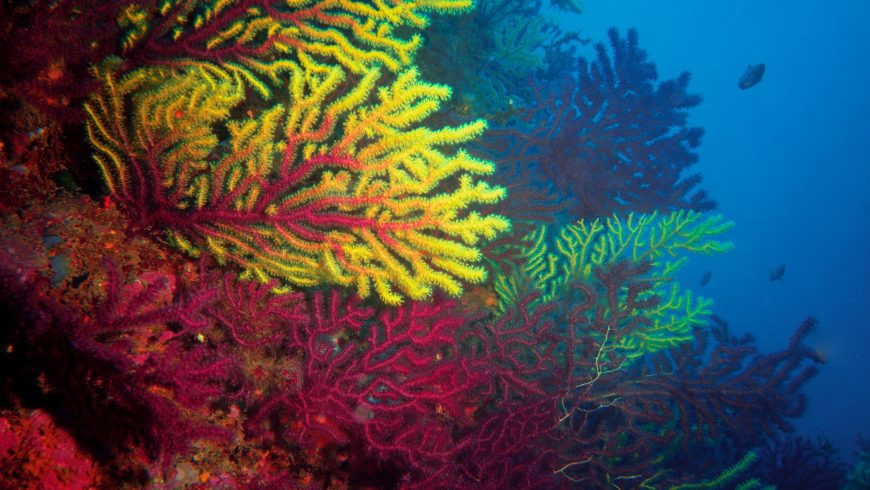 Coral destruction due to overtourism
Coral destruction due to overtourism
Alt text: Dead coral reefs, illustrating the devastating impact of overtourism and climate change on marine ecosystems.
4.2. What Can We Do As Tourists?
Ecobnb promotes responsible tourism by avoiding crowded, well-known destinations and promoting nearby destinations. We are often unaware of our surroundings and the beauty we can find without taking planes that emit large amounts of CO2. Slow and sustainable tourism provides authentic locations. These locations benefit local communities and those who invest in eco-sustainable activities. A relaxing and unplugging vacation could also be the ideal vacation for you. You could simply recharge your batteries by being in nature. Nonetheless, remember to reduce your environmental impact as much as possible. With Ecobnb we promote responsible tourism, avoiding overcrowded famous destinations and promoting the close destinations. Often we don’t know what surrounds us and which beauties we can find without necessarily taking planes that emit huge amounts of CO2. Slow and sustainable tourism offers authentic locations. These places enrich local communities and those who invest in eco-sustainable activities. The real holiday could also be for you the relaxing and unplugging holiday. You could simply recharge the energies in contact with nature. Nonetheless, remember to try and lessen as much as possible for your environmental impact.
5. Your Vademecum for Responsible Tourism
Here is your vademecum with 5 simple ideas to promote quality tourism over quantity every time we travel.
- Whenever possible, avoid air travel and cruises and instead use trains and public transportation.
- Don’t follow the crowd. Why not choose a different date if everyone goes to the mountains on August 15th?
- Plan your vacations in a different way, selecting authentic and less touristy destinations.
- Travel during the off-season: spring and autumn are beautiful and less expensive seasons.
- Respect the places you visit, try to live like a local, immerse yourself in the culture, and make friends with the locals.
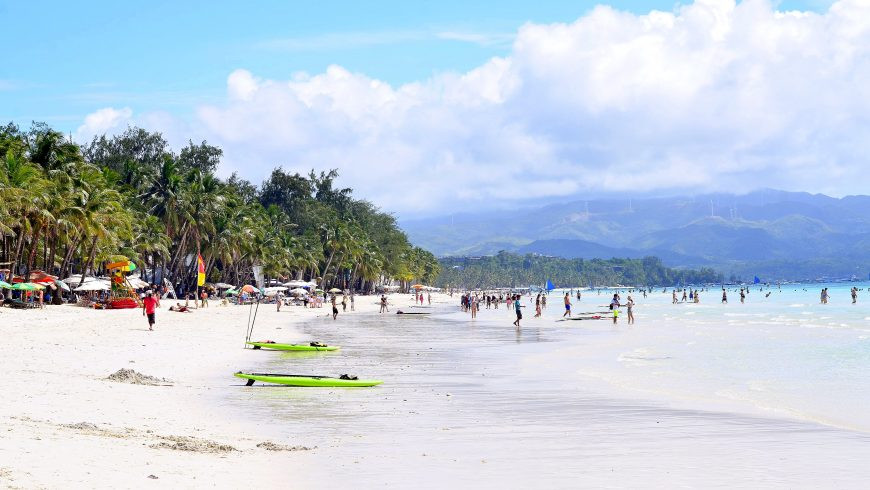 Waste accumulation due to mass tourism
Waste accumulation due to mass tourism
Alt text: Waste accumulation in a tourist area, highlighting the urgent need for better waste management practices in overtouristed destinations.
6. SIXT.VN: Your Partner for Sustainable Travel in Vietnam
SIXT.VN is committed to providing sustainable and responsible travel options for exploring Vietnam. Here’s how SIXT.VN helps you minimize your impact while maximizing your experience:
6.1. Personalized Itineraries
SIXT.VN creates itineraries that showcase Vietnam’s hidden gems, encouraging tourists to visit lesser-known, yet equally stunning destinations. This helps distribute tourist traffic and alleviate pressure on popular sites.
6.2. Eco-Friendly Transportation
SIXT.VN provides options for transportation that minimize environmental impact, such as hybrid vehicles and partnerships with local transportation services that adhere to eco-friendly practices.
6.3. Supporting Local Communities
SIXT.VN works with local businesses and communities, ensuring that tourism revenue benefits the local economy and promotes sustainable livelihoods. By choosing SIXT.VN, you’re directly contributing to the well-being of Vietnamese communities.
6.4. Promoting Responsible Travel
SIXT.VN educates travelers about responsible tourism practices, encouraging them to respect local customs, minimize waste, and support conservation efforts.
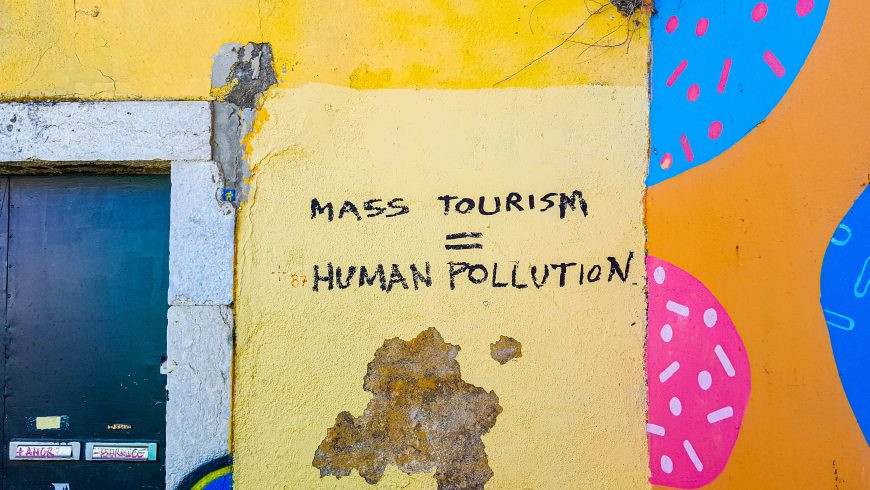 Protest against mass tourism
Protest against mass tourism
Alt text: Protestors holding signs against mass tourism, reflecting the growing concerns of local communities impacted by overtourism.
6.5. Diverse Services Offered by SIXT.VN
- Consulting: Get expert advice to plan trips that match interests.
- Airport Transfers: Use SIXT.VN for safe and reliable airport pickups.
- Hotel Bookings: Find great deals on hotels that fit budget and location preferences.
- Sightseeing Tickets: Book tickets easily for popular places in Hanoi and nearby.
- Flight Tickets: Get the best prices on flights with schedules that work.
- Hanoi Tours: Enjoy expertly run tours in Hanoi.
7. Explore Alternative Destinations in Vietnam
Vietnam offers a wealth of stunning destinations beyond the typical tourist hotspots. SIXT.VN encourages you to explore these hidden gems and discover the authentic beauty of Vietnam:
- Ha Giang: Discover the breathtaking landscapes of northern Vietnam with its towering mountains, winding roads, and vibrant ethnic cultures.
- Phong Nha-Ke Bang National Park: Explore the stunning caves and jungles of this UNESCO World Heritage Site, offering adventure and natural beauty.
- Mekong Delta: Experience the vibrant river life, floating markets, and lush landscapes of southern Vietnam, a world away from the bustling cities.
- Con Dao Islands: Escape to this archipelago of pristine beaches, crystal-clear waters, and rich marine life, perfect for a tranquil getaway.
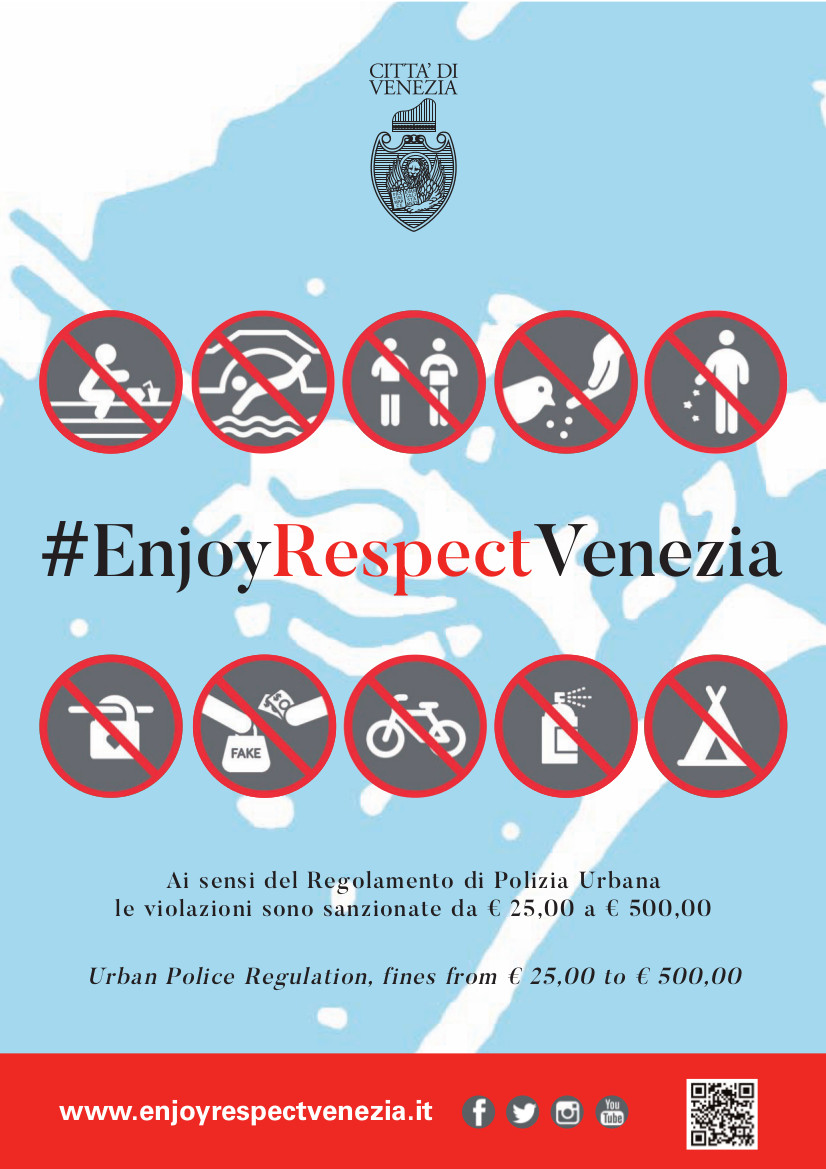 Venice implementing rules against overtourism
Venice implementing rules against overtourism
Alt text: A sign in Venice listing rules for tourists, part of the city’s effort to manage overtourism and protect its cultural heritage.
8. The Benefits of Choosing SIXT.VN for Your Vietnam Trip
Choosing SIXT.VN for your travel needs in Vietnam ensures a seamless and responsible travel experience. Here are some of the advantages:
- Convenience: Easy booking and reliable services save time and stress.
- Reliability: SIXT.VN is a trustworthy partner for all travel needs.
- Support: SIXT.VN offers excellent customer service, making sure your travel goes smoothly.
- Sustainability: Choosing SIXT.VN ensures the travel dollars contribute to the local economy and protect the environment.
9. Understanding Search Intent
Here are five key search intentions related to the causes of mass tourism:
- Informational: Users want to understand what causes mass tourism and its impact.
- Educational: Users seek in-depth knowledge and research on the factors driving overtourism.
- Solution-Oriented: Users are looking for ways to mitigate the negative effects of mass tourism.
- Travel Planning: Users want to find alternative destinations and responsible travel options.
- Awareness: Users aim to raise awareness about the issue and promote sustainable tourism practices.
10. Call to Action
Ready to explore Vietnam responsibly and sustainably? Visit SIXT.VN today to discover personalized itineraries, eco-friendly transportation options, and support local communities. Experience the authentic beauty of Vietnam while minimizing your impact on the environment and local cultures. Plan your sustainable adventure with SIXT.VN and make a positive difference!
Address: 260 Cau Giay, Hanoi, Vietnam
Hotline/Whatsapp: +84 986 244 358
Website: SIXT.VN
FAQ: Understanding and Addressing Mass Tourism
1. What exactly is mass tourism and why is it a problem?
Mass tourism is when many people visit the same place simultaneously. This can harm the environment, upset locals, and wear out tourist spots.
2. What are the main causes of mass tourism?
The main causes include cheap flights, popular social media spots, and cruises that bring many tourists at once.
3. How does mass tourism affect the environment?
Mass tourism can lead to pollution, deforestation, and harm to wildlife and natural habitats.
4. What are the social impacts of mass tourism on local communities?
Local communities often face rising living costs, loss of cultural identity, and crowded public services.
5. Can you suggest some ways to travel more responsibly and avoid contributing to mass tourism?
Travel in the off-season, visit less popular places, use local transport, and respect local customs.
6. How can I find sustainable and eco-friendly travel options?
Look for certified eco-tours, stay in eco-friendly accommodations, and support businesses committed to sustainability.
7. What role do social media and influencers play in mass tourism?
Social media and influencers often highlight only the most popular spots, leading to overcrowding in those locations.
8. How can local governments manage and mitigate the negative effects of mass tourism?
Local governments can implement tourist taxes, limit visitor numbers, and invest in infrastructure to handle tourist flow.
9. What are some examples of destinations successfully managing mass tourism?
Some destinations use strategies like promoting off-season travel, offering alternative attractions, and engaging with local communities to manage tourism effectively.
10. How does SIXT.VN support sustainable travel in Vietnam?
SIXT.VN supports sustainable travel by offering personalized itineraries to lesser-known destinations, eco-friendly transportation options, and partnerships with local communities, ensuring that tourism revenue benefits the local economy and promotes responsible travel practices.
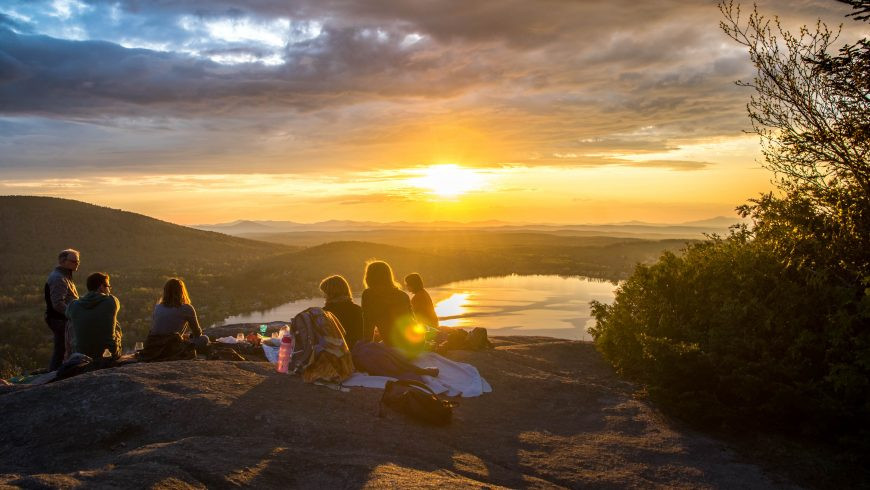 Arthur Poulin; on Unsplash showing environmental awareness
Arthur Poulin; on Unsplash showing environmental awareness
Alt text: A person contemplating nature, symbolizing the importance of environmental awareness and responsible tourism practices.



